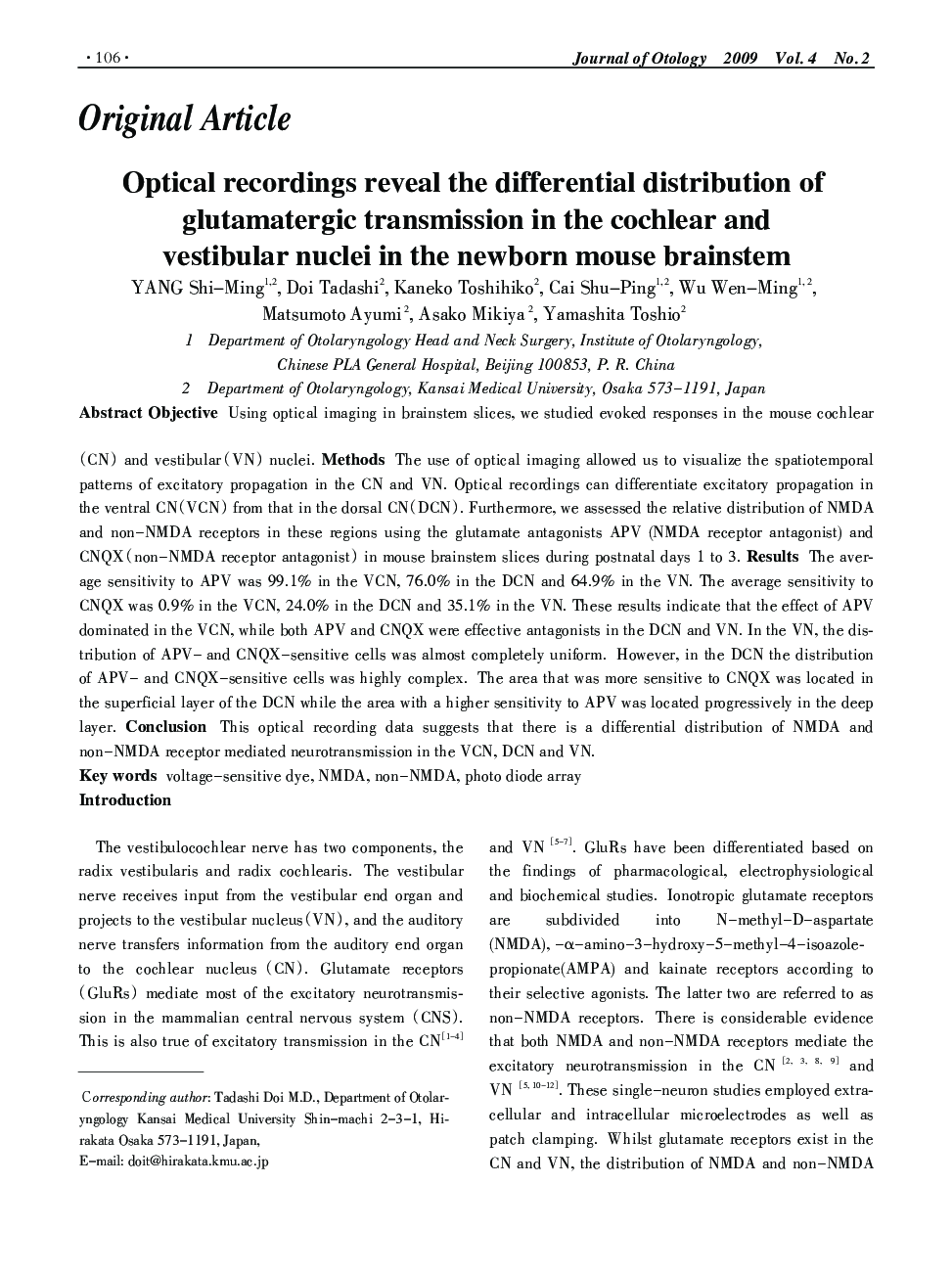| Article ID | Journal | Published Year | Pages | File Type |
|---|---|---|---|---|
| 4116774 | Journal of Otology | 2009 | 9 Pages |
ObjectiveUsing optical imaging in brainstem slices, we studied evoked responses in the mouse cochlear (CN) and vestibular (VN) nuclei.MethodsThe use of optical imaging allowed us to visualize the spatiotemporal patterns of excitatory propagation in the CN and VN. Optical recordings can differentiate excitatory propagation in the ventral CN(VCN) from that in the dorsal CN(DCN). Furthermore, we assessed the relative distribution of NMDA and non–NMDA receptors in these regions using the glutamate antagonists APV (NMDA receptor antagonist) and CNQX (non–NMDA receptor antagonist) in mouse brainstem slices during postnatal days 1 to 3.ResultsThe average sensitivity to APV was 99.1% in the VCN, 76.0% in the DCN and 64.9% in the VN. The average sensitivity to CNQX was 0.9% in the VCN, 24.0% in the DCN and 35.1% in the VN. These results indicate that the effect of APV dominated in the VCN, while both APV and CNQX were effective antagonists in the DCN and VN. In the VN, the distribution of APV– and CNQX–sensitive cells was almost completely uniform. However, in the DCN the distribution of APV– and CNQX–sensitive cells was highly complex. The area that was more sensitive to CNQX was located in the superficial layer of the DCN while the area with a higher sensitivity to APV was located progressively in the deep layer.ConclusionThis optical recording data suggests that there is a differential distribution of NMDA and non–NMDA receptor mediated neurotransmission in the VCN, DCN and VN.
